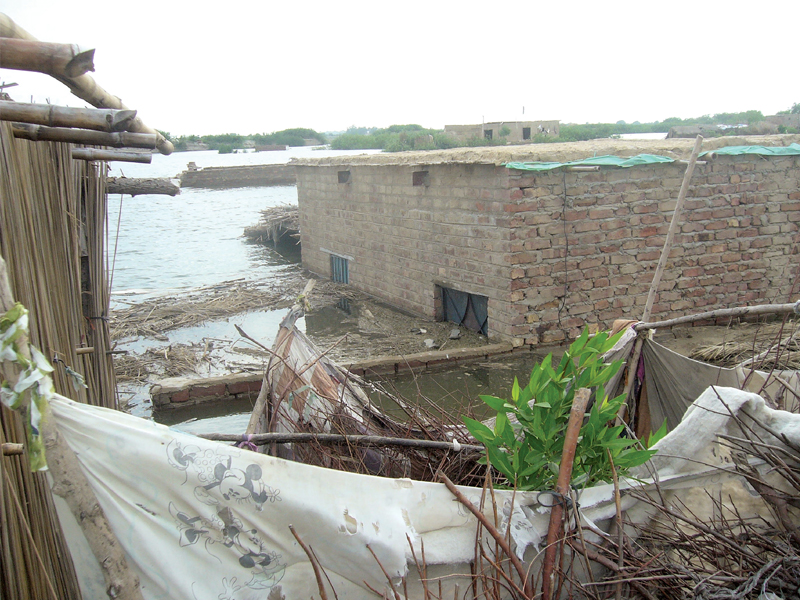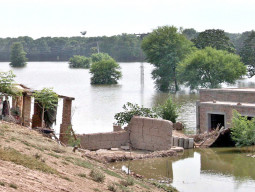
In 1998, China’s 6,300-kilometre-long Yangtze River flooded, affecting 79.6 million people in China. At least 1,384 died and direct economic losses from the high waters were estimated at just over $15 billion.

Rapid population growth and poor flood control policies might have exacerbated the impact of the 1998 Yangtze River floods. But in the disaster’s wake, according to a recent Ramsar Advisory Mission report, China adopted an integrated flood management strategy based on the way European countries are managing the Rhine River.
As a result, the Chinese government started “working with nature rather than fighting it” and came up with a series of non-engineering interventions such as restoring flood plains, reforestation and relocating communities away from flood-prone areas. Despite implementation flaws, the integrated strategy has reduced flood risks in China and brought socioeconomic benefits, the mission’s report stated.
The advisory mission is a technical assistance mechanism for countries such as Pakistan which have ratified the Ramsar Convention — an intergovernmental treaty for protection of wetlands.
Its complete report, based on a week-long visit to Pakistan in late 2012 and released in June 2013, includes recommendations for “wise-use of floods” in the Indus River basin.
The mission’s report noted “lack of an integrated basin approach to the management of the [Indus] river” and “insufficient coordination” between various agencies that manage the river.

The mission counted at least seven different agencies somehow related to floods management, with only one, the Indus River System Authority (IRSA), having some kind of a coordinating role. But even IRSA’s responsibility is limited to water allocation among the provinces, according to the mission, which comprised of four international and national experts.
Pakistan needs a “broad-based coordinating authority” for sustainable management of the Indus basin and its resources as well as pollution control and flood management, the mission recommended.
“Do we need an overarching agency? Absolutely,” said Shafqat Kakakhel, a former executive director of the United Nations Environment Programme. “We need a federal-level office to deal with climate change-related issues including floods.”
While the National Climate Change Policy launched by the federal government in February 2013 called for more water storage sites to absorb floodwater, the Ramsar mission advised against an exclusively “hard-engineering” dam-based solution.
Instead, it suggested an “integrated approach” that includes ecological, non-structural flood protection strategies. These range from management of floodplains (flat areas near rivers and streams which regularly flood when the water level rises) to restoring lakes that can then also store the floodwater and creating alternative livelihood opportunities for the local communities.

An ecosystem-based approach such as the integrated model recommended by the mission is essential, said International Union for Conservation of Nature (IUCN) Pakistan Country Director Mahmood Akhtar Cheema.
“We have to think in terms of alternatives, both for managing our water resources and excess water, and also helping local communities,” Cheema said.
Fortunately, the Federal Flood Commission (FFC) has included the mission’s recommendations about integrated flood management in its 4th National Flood Protection Plan, which is being prepared with the help of a consultant — National Engineering Services Pakistan.
A draft of the plan, which covers the entire Indus River basin, would be ready by February 2014, said an FFC official, who requested anonymity.
“With the draft plan, we would have a basic document to streamline flood management efforts before the Monsoon season of 2014,” the official told The Express Tribune.
The mission’s report also emphasised removing illegal encroachments from floodplains as these constrict the natural flow of floodwater, increasing its velocity and force downstream.
“We are looking at the ecological aspects of the floods and managing the rivers in the plan as well,” the FFC official said. “But in addition to the natural hazards, we have to face the social set-up which allows such encroachments on the floodplains.”
For a country that is both vulnerable to climate change effects and facing a critical water availability situation, perhaps it is time to think of floods as a “blessing” that can be used for socioeconomic benefits, as the mission’s report suggests.
Published in The Express Tribune, October 21st, 2013.
























1714029027-0/Tribune-Collage-Feature-Images-(11)1714029027-0-270x192.webp)




















COMMENTS
Comments are moderated and generally will be posted if they are on-topic and not abusive.
For more information, please see our Comments FAQ